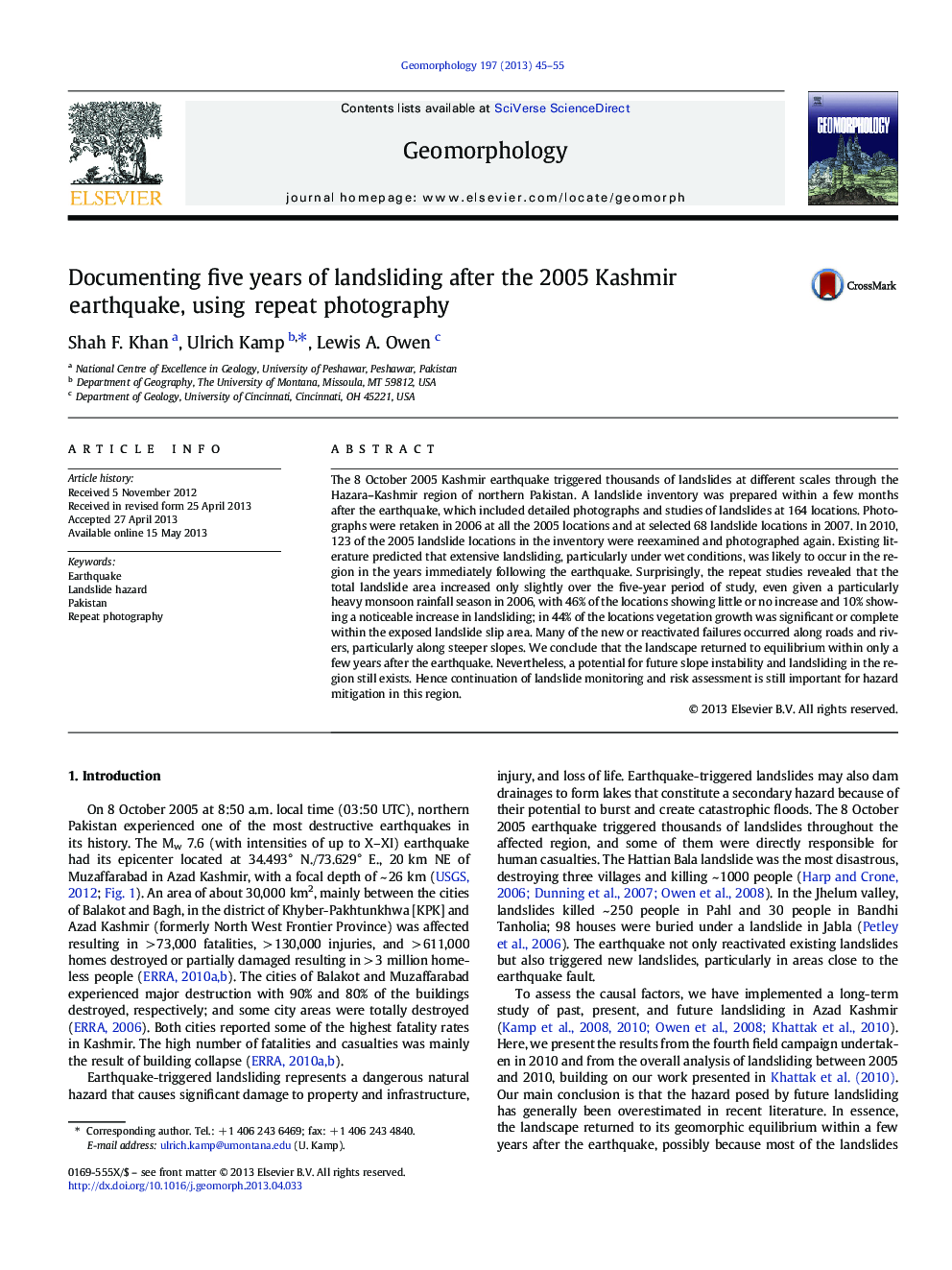| Article ID | Journal | Published Year | Pages | File Type |
|---|---|---|---|---|
| 4684762 | Geomorphology | 2013 | 11 Pages |
The 8 October 2005 Kashmir earthquake triggered thousands of landslides at different scales through the Hazara–Kashmir region of northern Pakistan. A landslide inventory was prepared within a few months after the earthquake, which included detailed photographs and studies of landslides at 164 locations. Photographs were retaken in 2006 at all the 2005 locations and at selected 68 landslide locations in 2007. In 2010, 123 of the 2005 landslide locations in the inventory were reexamined and photographed again. Existing literature predicted that extensive landsliding, particularly under wet conditions, was likely to occur in the region in the years immediately following the earthquake. Surprisingly, the repeat studies revealed that the total landslide area increased only slightly over the five-year period of study, even given a particularly heavy monsoon rainfall season in 2006, with 46% of the locations showing little or no increase and 10% showing a noticeable increase in landsliding; in 44% of the locations vegetation growth was significant or complete within the exposed landslide slip area. Many of the new or reactivated failures occurred along roads and rivers, particularly along steeper slopes. We conclude that the landscape returned to equilibrium within only a few years after the earthquake. Nevertheless, a potential for future slope instability and landsliding in the region still exists. Hence continuation of landslide monitoring and risk assessment is still important for hazard mitigation in this region.
